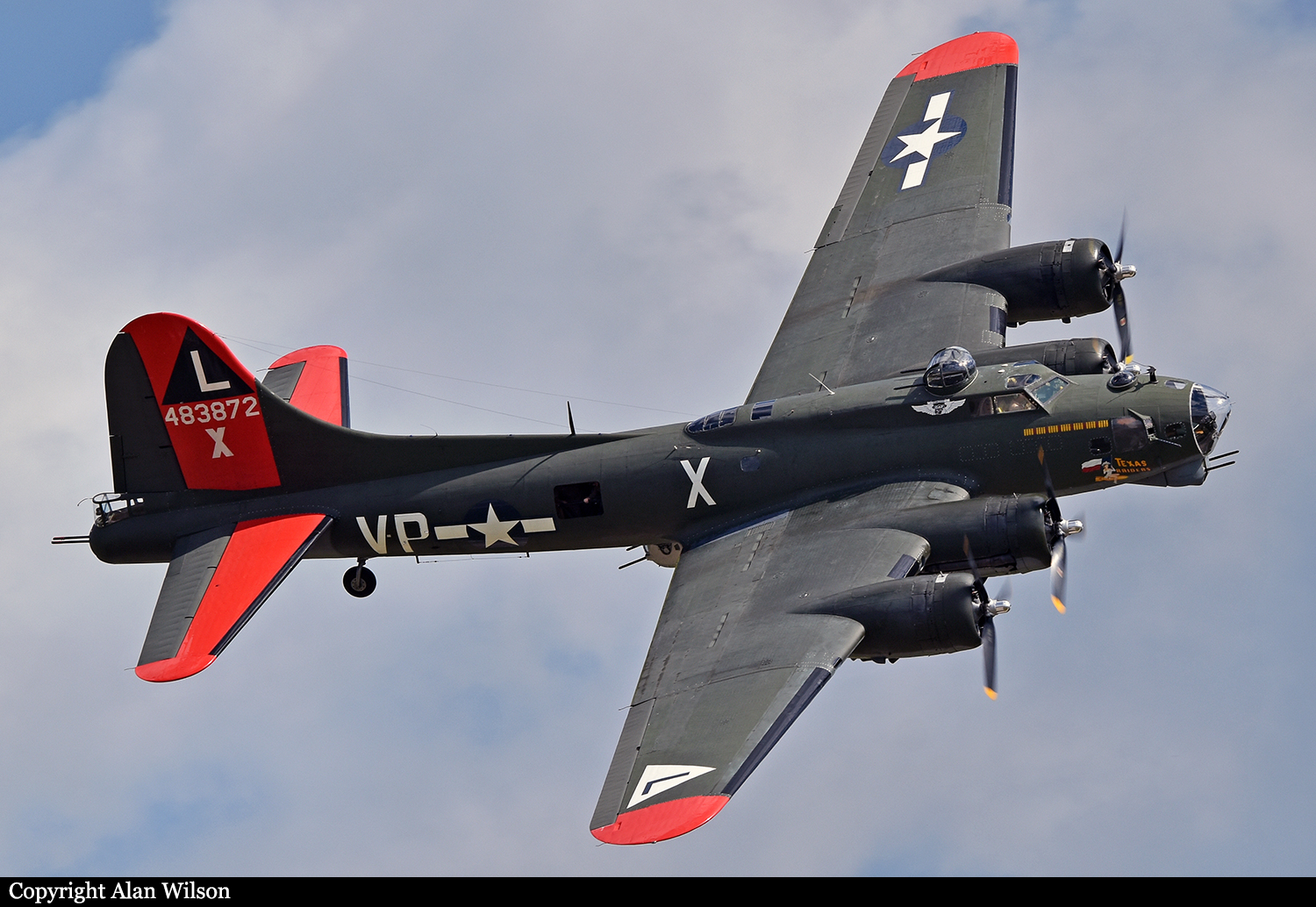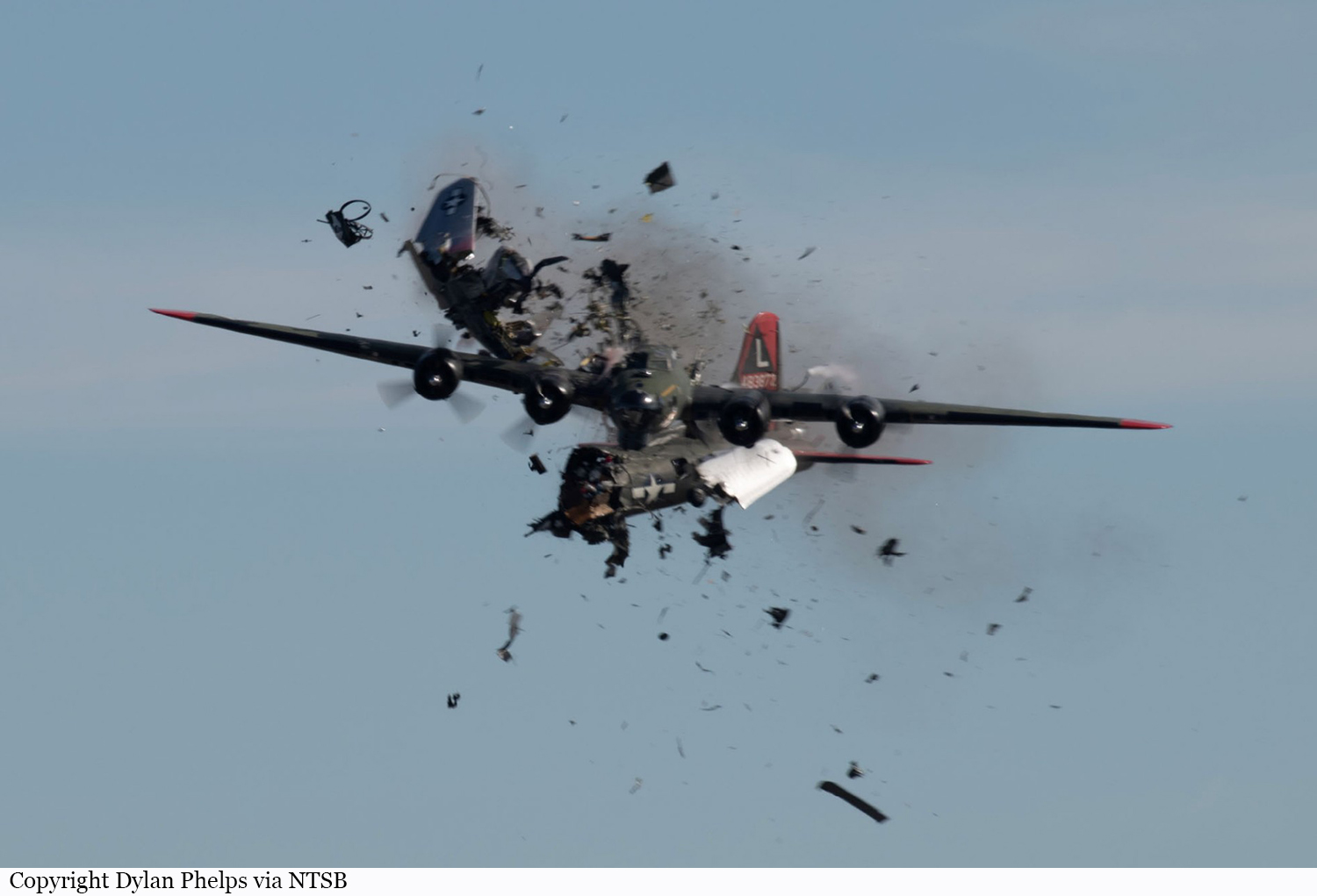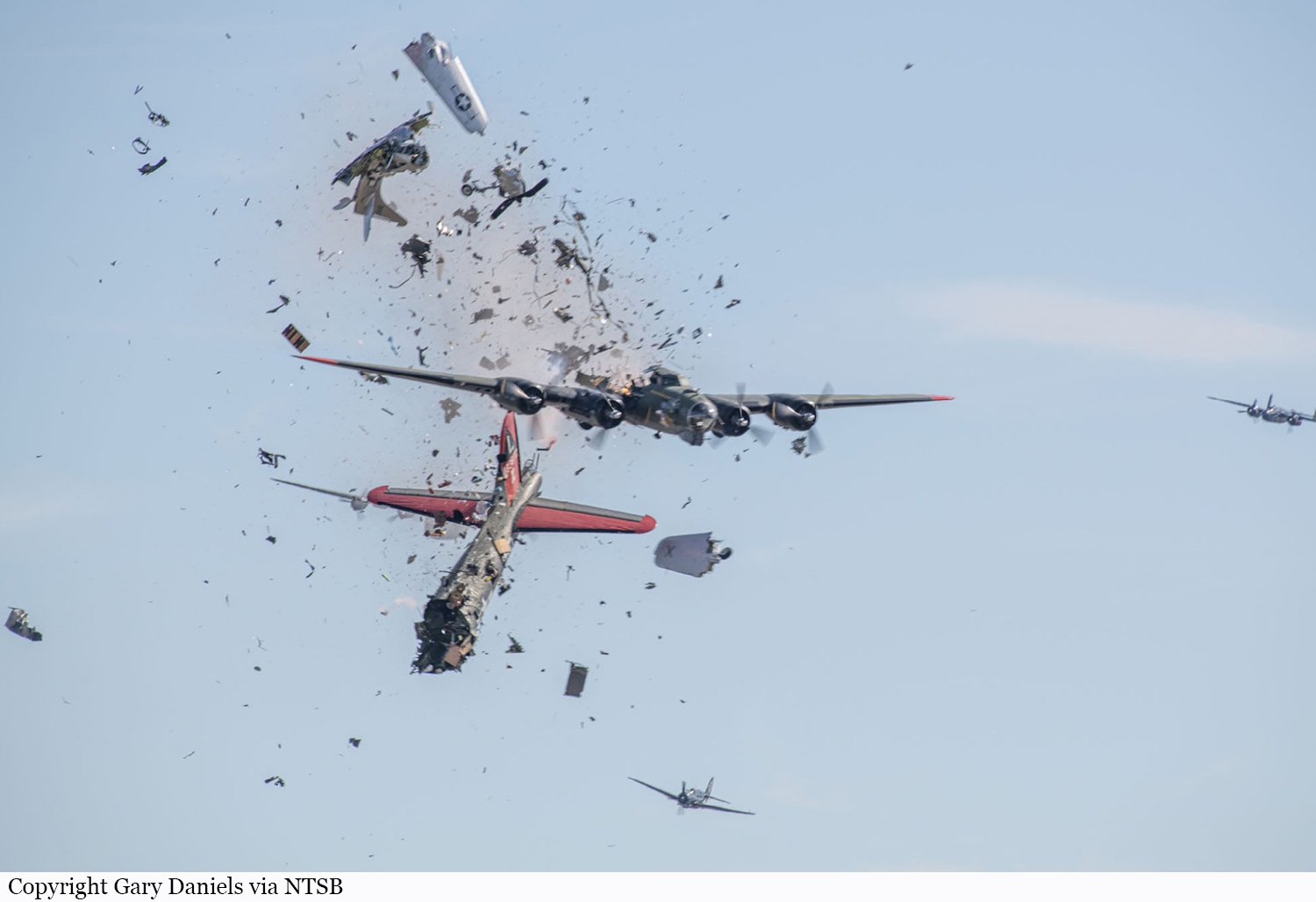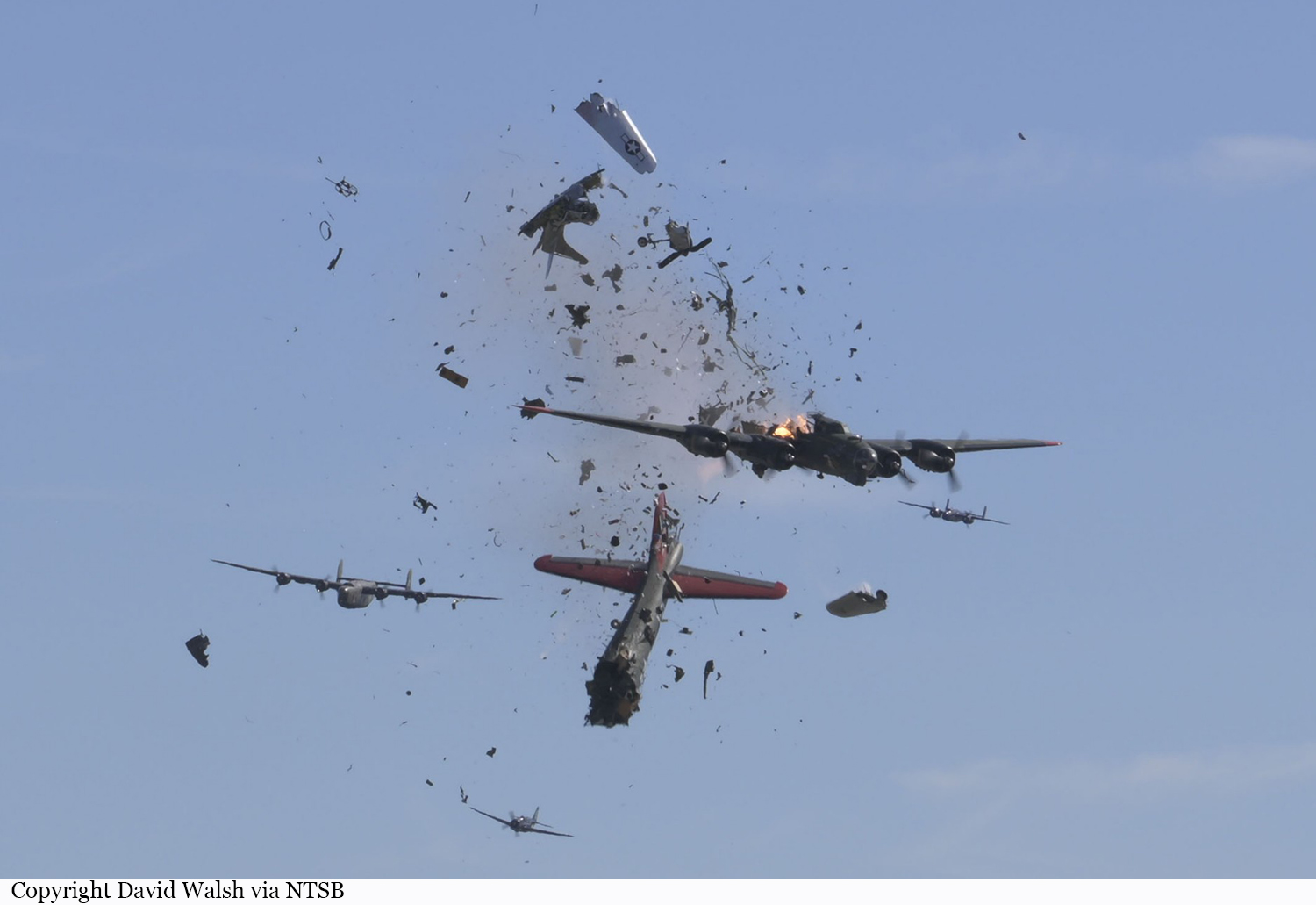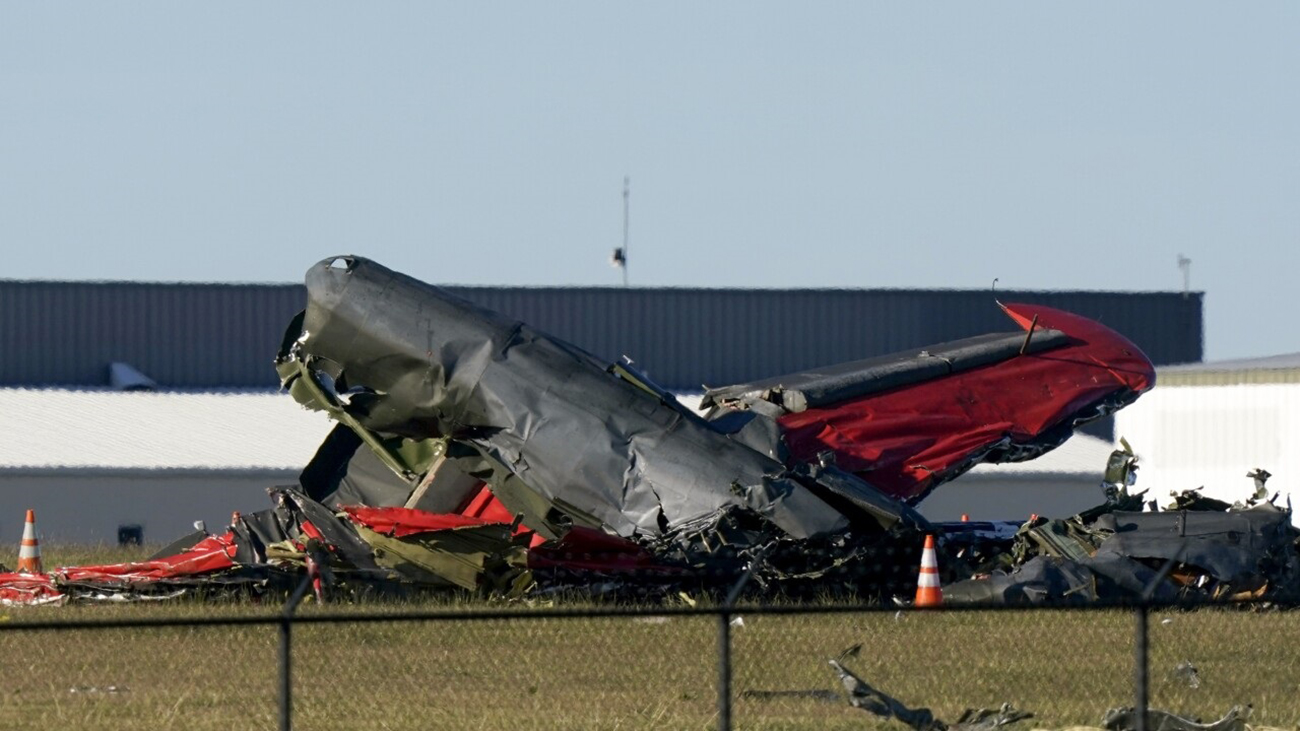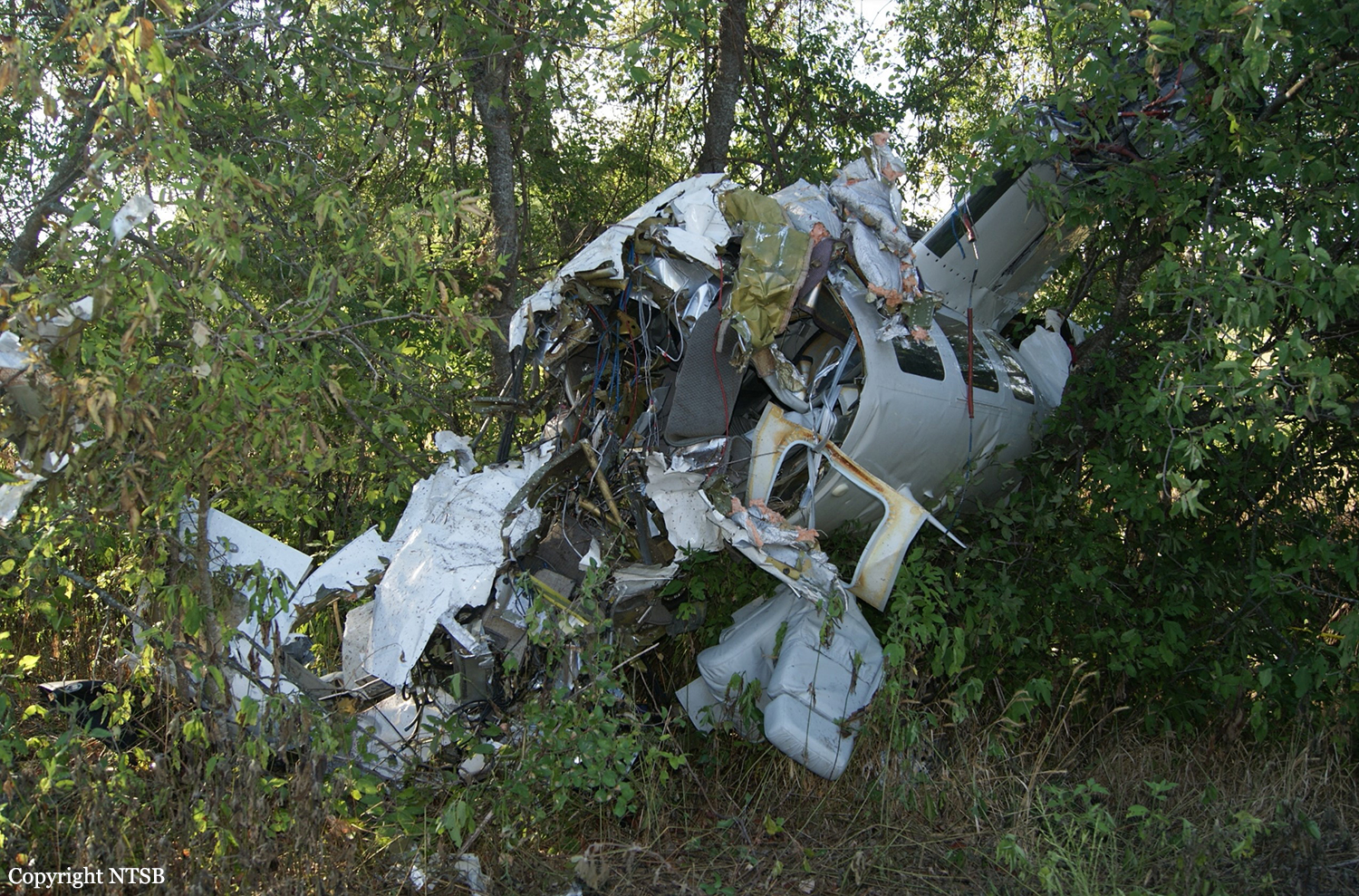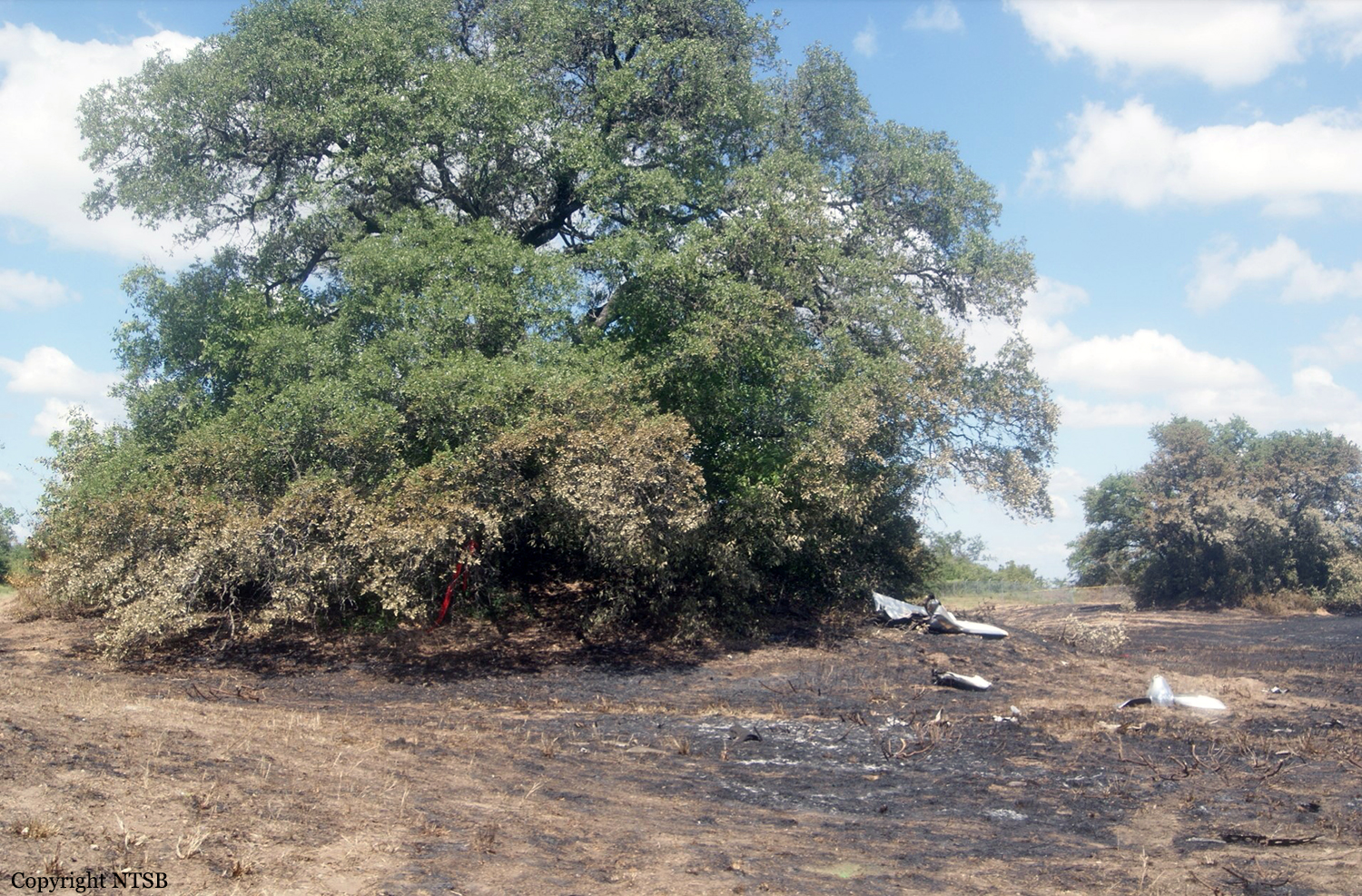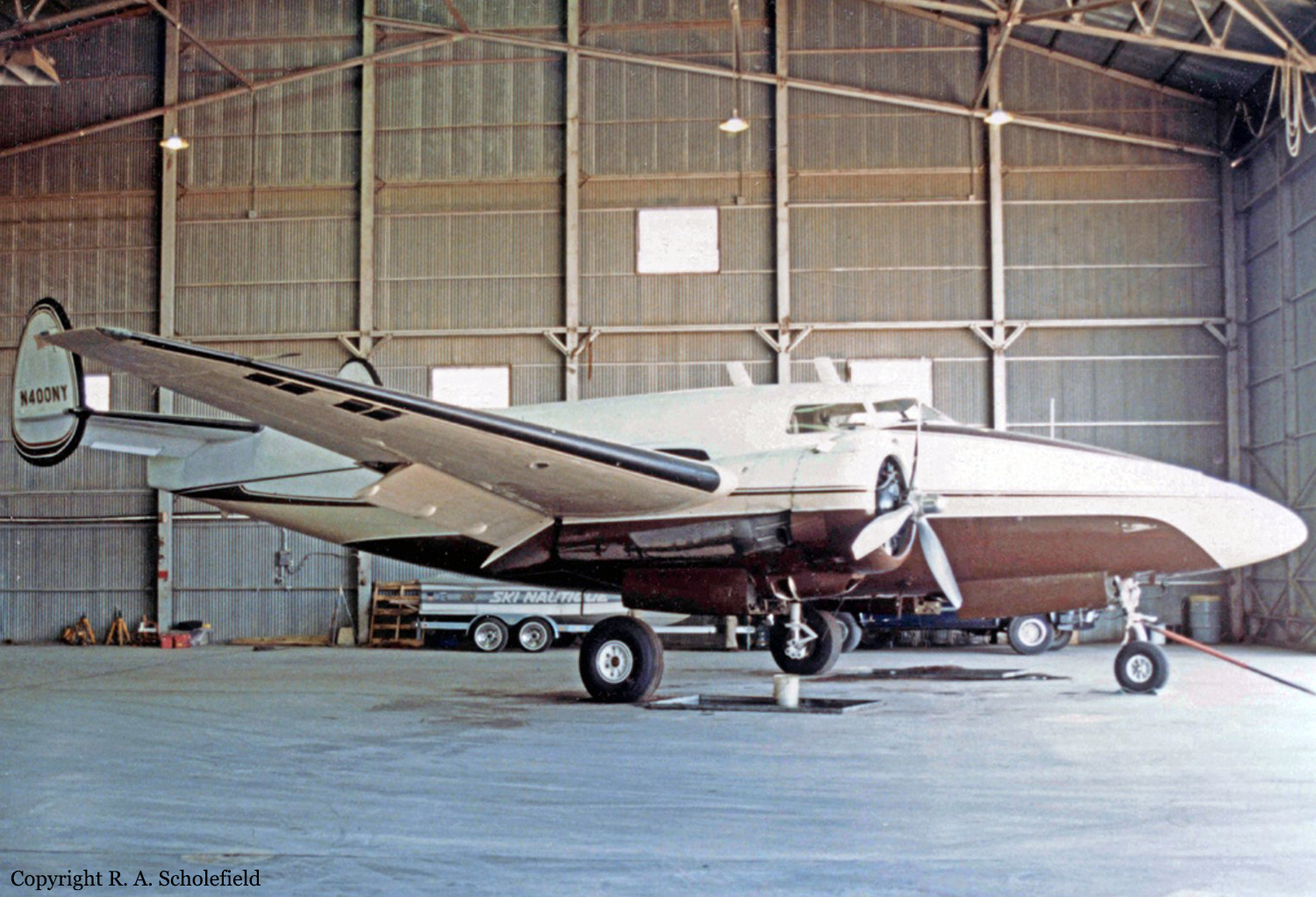Crash of a Boeing B-17G-95-DL Flying Fortress in Dallas: 5 killed
Date & Time:
Nov 12, 2022 at 1322 LT
Registration:
N7227C
Survivors:
No
Schedule:
Dallas - Dallas
MSN:
32513
YOM:
1944
Crew on board:
5
Crew fatalities:
Pax on board:
0
Pax fatalities:
Other fatalities:
Total fatalities:
5
Captain / Total hours on type:
500.00
Copilot / Total hours on type:
90
Aircraft flight hours:
9239
Circumstances:
On November 12, 2022, about 1322 central standard time, a Boeing B-17G, N7227C, and a Bell P-63F, N6763, collided in flight during a performance at the Commemorative Air Force’s (CAF) Wings Over Dallas air show at Dallas Executive Airport (KRBD) in Dallas, Texas. The pilot, copilot, flight engineer, and two scanners on board the Boeing B-17G and the pilot of the Bell P-63F were fatally injured, and both airplanes were destroyed. No injuries to persons on the ground were reported. Both accident airplanes (and six other historic, former military airplanes that were airborne as part of the same performance) were operated by the CAF under the provisions of Title 14 Code of Federal Regulations (CFR) Part 91 and a certificate of waiver for the air show. The Boeing B-17G was in the first position of five historic bomber airplanes flying as solo aircraft in trail, and the Bell P-63F was in the last position of three historic fighter airplanes flying in formation. The takeoffs, repositioning turns, and passes of the eight airplanes in the accident performance were directed in real time via radio by the air boss, who had primary responsibility for the control of air show operations. Just before the accident, the bomber group and the fighter formation completed a pass in front of the crowd of spectators from show right to left (that is, right to left from the crowd’s perspective). The airplanes were setting up for the next pass when the accident occurred. This pass was intended to be from show left to right in front of the crowd, and the air boss issued directives for the fighter formation to pass off the left side of the bomber group airplanes and then cross in front of them. The position data showed that the flight path for the fighter lead and position 2 fighter airplanes passed the bomber airplanes off the bombers’ left side before crossing in front of the Boeing B-17G but that the Bell P-63F’s flight path converged with that of the Boeing B-17G. Video and photographic evidence captured by witnesses on the ground showed that the Bell P-63F was in a descending, left-banked turn when it struck the left side of the Boeing B-17G near the trailing edge of the left wing, then both airplanes broke apart in flight.
Probable cause:
The National Transportation Safety Board determines that the probable cause of the accident was the air boss’s and air show event organizer’s lack of an adequate, prebriefed aircraft separation plan for the air show performance, relying instead on the air boss’s real-time deconfliction directives and the see-and-avoid strategy for collision avoidance, which allowed for the loss of separation between the Boeing B-17G and the Bell P-63F airplanes. Also causal was the diminished ability of the accident pilots to see and avoid the other aircraft due to flight path geometry, out-the-window view obscuration by aircraft structures, attention demands associated with the air show performance, and the inherent limitations of human performance that can make it difficult to see another aircraft. Contributing to the accident were the lack of Federal Aviation Administration (FAA) guidance for air bosses and air show event organizers on developing plans and performing risk assessments that ensure the separation of aircraft that are not part of an approved maneuvers package and the lack of FAA requirements and guidance for recurrent evaluations of air bosses and direct surveillance of their performance.
Final Report:
